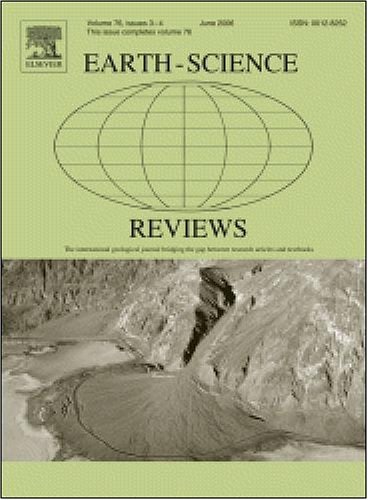作为沉积物的塑料-对塑料垃圾分类方案日益模糊的普遍和客观的实际解决方案
IF 10.8
1区 地球科学
Q1 GEOSCIENCES, MULTIDISCIPLINARY
引用次数: 0
摘要
塑料分类方案的不一致性和模糊性限制了我们在全球所有环境中预测塑料路线、降解和积累的能力。全球塑料产量呈指数级增长,在1950年至2017年间达到约92亿吨。其中,估计有53亿吨被丢弃,其中很大一部分管理不善并进入自然环境。塑料无处不在,几乎存在于所有陆地和海洋环境中,其耐久性确保它们可以在环境中持续存在数千年,造成不断升级的生态毒理学和环境风险。为了有意义地解决塑料的分布、途径及其影响,我们需要一个清晰、普遍适用的分类方案。虽然有许多来自社会的行动呼吁,但我们还没有提供一个通过其适用性促进普遍理解的解决方案。在这里,我们建议将塑料视为沉积物,这样我们就可以在其广泛适用的框架内使用沉积学的既定原则和方法来理解和分类颗粒。通过将沉积学技术应用于塑料,我们开发了一种分类方案,以客观地描述塑料的基本沉积学特征,这些特征已知与环境中的颗粒行为和分布相关。,即尺寸、形状、密度和材料特性。它的核心是在分类和解释之前的客观观察,对空间和时间变化的识别,以及能够适应塑性特征和研究问题复杂性的适应性和灵活性框架。由于分类方案分离了塑料中看到的每个物理变量,通过使用它,我们将能够更好地了解塑料特性如何影响其环境行为。虽然使用该方案将主要有利于评估塑料物体和颗粒的从源到汇的路线、运输过程和积累趋势,但其潜在影响超出了这一点。它有能力通过跨学科和跨区域的数据比较和交流来加强环境监测和管理战略,这将使对了解和管理塑料污染感兴趣的广泛利益攸关方受益。本文章由计算机程序翻译,如有差异,请以英文原文为准。
Plastic as a Sediment – A universal and objective practical solution to growing ambiguity in plastic litter classification schemes
The universal and growing challenge of inconsistency and ambiguity in plastic classification schemes restricts our ability to predict plastic routing, degradation, and accumulation in all environments worldwide. Global plastic production has risen exponentially, reaching approximately 9200 million tons between 1950 and 2017. Of this, an estimated 5300 million tons have been discarded, with a significant fraction mismanaged and entering the natural environment. Plastics are pervasive, found in nearly every terrestrial and marine environment, and their durability ensures that they can persist in the environment for thousands of years, posing escalating ecotoxicological and environmental risks. To meaningfully address plastic distribution, pathways, and the impact it has, we need a clear, universally applicable classification scheme. Whilst there have been many calls to action from the community, we do not yet have a solution offered that facilitates universal understanding through its applicability. Here we propose treating plastic as sediment, such that we may employ the well-established principles and methodologies of sedimentology within its widely applicable framework for understanding and classifying particles. By applying sedimentological techniques to plastics, we developed a classification scheme to objectively describe plastic by its fundamental sedimentological characteristics that are known to correlate with particle behavior and distribution in the environment., i.e., size, shape, density, and material properties. It centers on objective observation before classification and interpretation, recognition of spatial and temporal changes, and an adaptable and flexible framework that can adapt to the complexities of plastic characteristics and research questions. As the classification scheme isolates each physical variable seen in plastic, through using it, we will be better able to understand how plastic characteristics influence their environmental behavior. Whilst the use of this scheme will be primarily beneficial in assessing source-to-sink routing, transport processes, and accumulation tendencies of plastic objects and particles, its potential impact extends beyond this. It has the capacity to enhance environmental monitoring and management strategies through cross-disciplinary and cross-regional data comparisons and exchanges, which will benefit a broad range of stakeholders interested in understanding and managing plastic pollution.
求助全文
通过发布文献求助,成功后即可免费获取论文全文。
去求助
来源期刊

Earth-Science Reviews
地学-地球科学综合
CiteScore
21.70
自引率
5.80%
发文量
294
审稿时长
15.1 weeks
期刊介绍:
Covering a much wider field than the usual specialist journals, Earth Science Reviews publishes review articles dealing with all aspects of Earth Sciences, and is an important vehicle for allowing readers to see their particular interest related to the Earth Sciences as a whole.
 求助内容:
求助内容: 应助结果提醒方式:
应助结果提醒方式:


